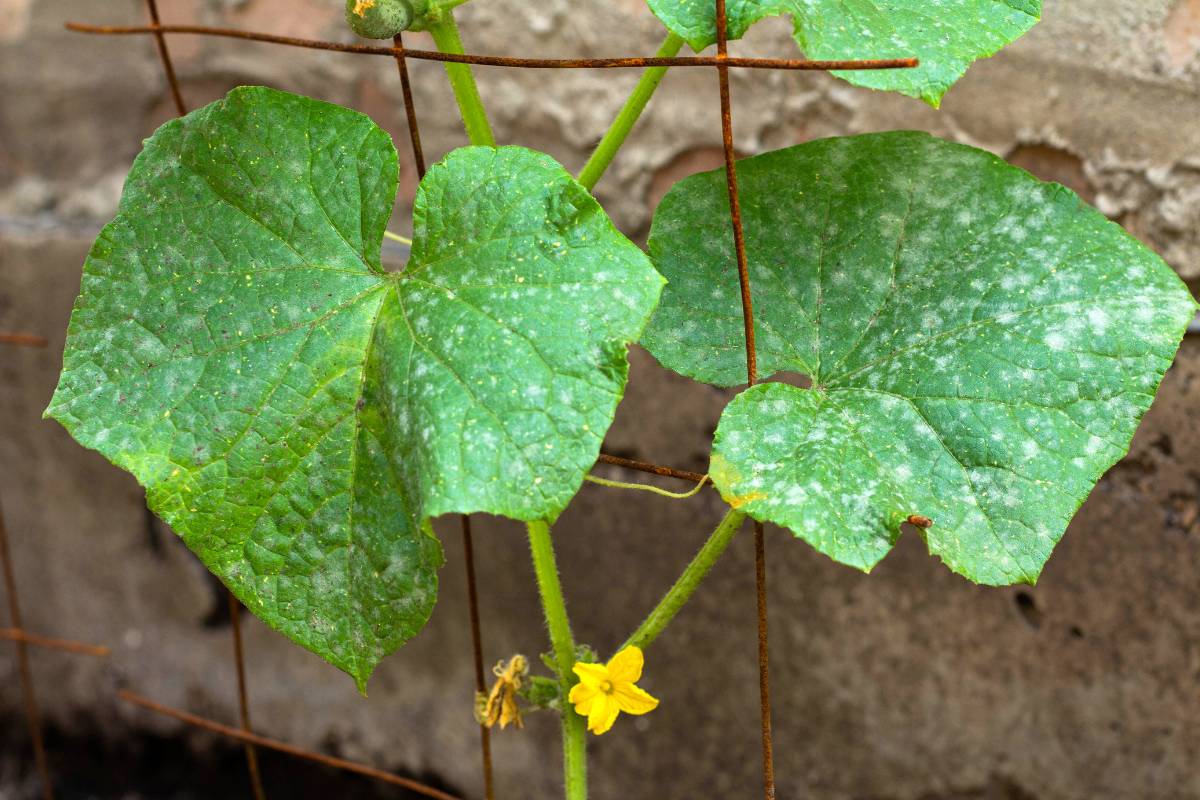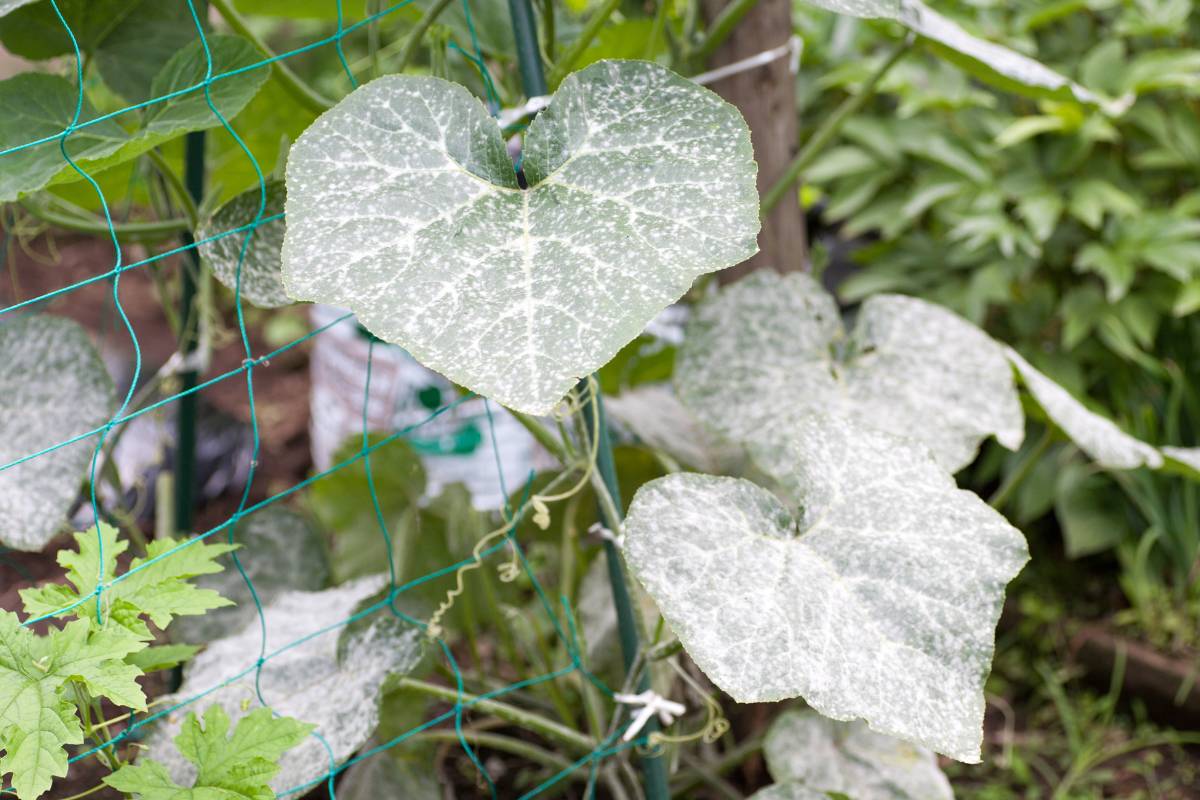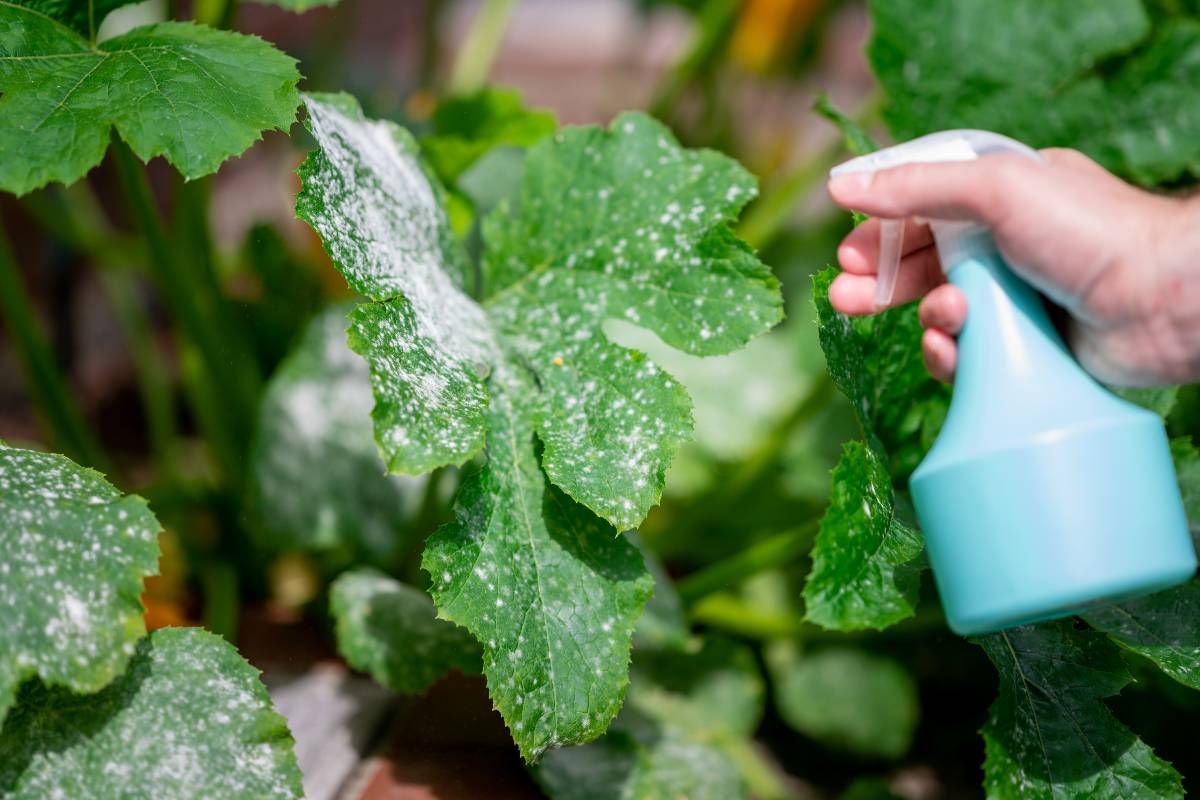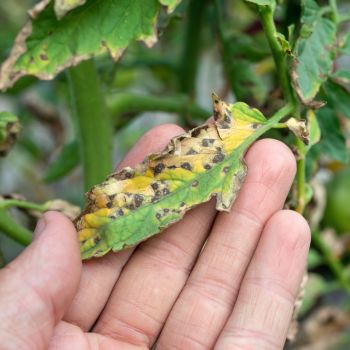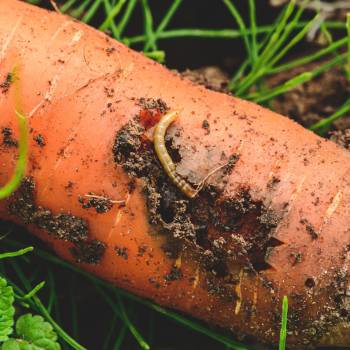Powdery mildew can be a disastrous problem for a wide range of garden plants. Appearing most often in damp or humid areas with poor airflow, a mildew infection can quickly cover a plant's foliage with white, powdery fungal growth, interfering with photosynthesis and reducing both health and vigour.
While most plants can survive a mild case of powdery mildew, both the appearance and productivity of plants will be affected. If left unchecked, mildew can eventually kill off a plant completely. So it's preferable to take action at the earliest sign of a problem.
Cultural Practices
As with most plant pathogens, the amount of sun a plant receives, how it’s watered, air circulation and the quality of the soil can all play roles in preventing powdery mildew outbreaks. Click here to learn more about practices that can help in the battle against severe infections.
Using Commercial Fungicides
The most common way to tackle a powdery mildew infection once it's detected is to use a commercial fungicide product, but many people prefer not to take that route for several reasons. First, few fungicides are completely organic, and so aren't an ideal choice for gardeners who prefer an all-natural approach wherever possible.
Second, many fungicides are also toxic to humans and animals. This not only causes safety issues in a domestic garden, but using potentially dangerous chemicals on vegetables, fruits and herbs is less than ideal.
And as a final downside, several fungicides are especially toxic to bees. With the wild population of these essential pollinators already under stress from several directions, few gardeners want to add to the pressure.
Bi-Carb of Soda to the Rescue
Luckily, there's a safe and effective alternative to commercial fungicide sprays that you can make using a substance you likely already have in your pantry or cleaning cupboard. Bi-carb of soda, also known as baking soda or sodium bicarbonate, is known to be effective at reducing powdery mildew and several other common fungus problems without posing the toxic risks of other treatments.
And while bi-carb of soda alone might not be able to rescue a badly infected plant, it can help stop the problem from spreading around your garden and can also be used as a preventative treatment throughout the growing season.
How to Make a Bi-Carb of Soda Anti-Fungal Spray
Making a fungicidal baking soda spray couldn't be easier. Simply dissolve a teaspoon of the powder into one litre of ordinary water and add a few drops of liquid soap to help the mixture stick to the leaves. It's important to use ordinary hand soap rather than laundry detergent, which can contain chemical additives that are harmful to plants.
Pour the mixture into a regular garden sprayer or mister, shake it thoroughly, and spray liberally over the affected plants. Ideally, you should do this on a relatively cool morning when the plant isn't in direct sun to prevent the leaves scorching as the mixture dries. Whatever the weather, avoid spraying in the evenings; any fungal problems could become even worse if the leaves are left damp overnight.
Are There Any Drawbacks?
In everyday amounts, bi-carb of soda is vastly less harmful than other common fungicides such as copper or sulphur, but it can still cause problems if it isn't used carefully.
Firstly, if your spray is too concentrated it can cause foliage scorching, showing up as yellowing or curling of leaf tips. When a plant is already weakened by a mildew outbreak the extra stress could prove fatal, so always err on the side of caution when making up your spray so that it's not too strong.
Second, repeated use will inevitably mean the bicarbonate of soda builds up in the soil below the plant. In the open ground, this won't usually cause an issue, but in containers frequent spraying will slowly but surely raise the compost's pH level, eventually locking up essential nutrients and hindering growth. If you use a bi-carb of soda spray on any potted plant, be sure to change the compost before the next growing season to restore a more neutral pH level.
And lastly, baking soda isn't as effective as commercial products, so if your plants are badly affected you may find a dedicated mildew fungicide makes a better choice, even if it's less eco-friendly.
Nonetheless, if your gardening is often plagued by powdery mildew flare ups, then proactively spraying to target plants with a mild bi-carb of soda solution can reduce the speed of fungal growth, giving your plants a much better chance of being healthy and productive over the damper parts of the growing season.
